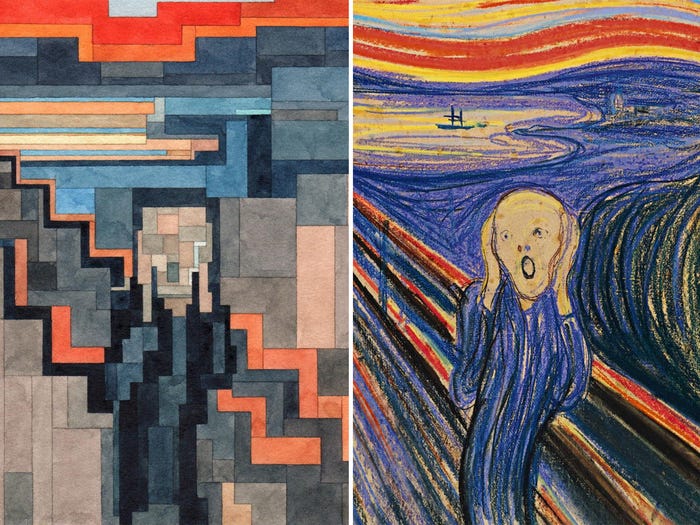Video games are influencing contemporary artists, with the immersive gameplay, dynamic storytelling and vivid imagery inspiring a new generation of artists to create thought-provoking works that blur the line between reality and virtual worlds. The integration of gaming and contemporary art has allowed artists to push boundaries and create work that moves beyond the traditional canvas. Interactive installations, virtual reality experiences and digital animation are just some of the ways artists have incorporated gaming into their practice. The immersive nature of games has allowed artists to create work that engages viewers on an emotional and sensory level and creates an experience that transports viewers into the world of the artwork.
The Art of Gaming: How Video Games are Inspiring Contemporary Artists
Video games have always been a part of our lives. From the early days of Pong to the modern era of Call of Duty, games have entertained us, challenged us and left a lasting impression on our imagination. But what is often overlooked is the impact gaming has on contemporary art. The vibrant graphics, dynamic storytelling and immersive gameplay have all influenced a new generation of artists creating thought-provoking works that blur the line between reality and virtual worlds.
Gaming and Contemporary Art
The integration of gaming and contemporary art may seem like an odd combination, but the use of gaming technology has allowed artists to push boundaries and create art that moves beyond the traditional canvas. Interactive installations, virtual reality experiences and digital animation are just some of the ways artists have incorporated gaming into their practice. This fusion of technology and art has led to a collaboration between the two fields, resulting in innovative and exciting works.
Creating an Experience
The immersive nature of video games has allowed artists to create work that is not only visually stunning, but also engages viewers on an emotional and sensory level. The use of sound, lighting and technology creates an experience that transports viewers into the world of the artwork. This experience is what sets video games apart from traditional art forms and is something contemporary artists strive to achieve in their work.
Gamer Culture as Inspiration
The culture that surrounds video games has also been a source of inspiration for contemporary artists. The characters, themes and storylines portrayed in gaming have become a common language for artists to communicate their ideas. From street art to fine art, the influence of gaming can be seen in a variety of mediums. The use of popular gaming imagery, such as characters from Super Mario or Pokemon, allows artists to tap into a nostalgic element that resonates with viewers.
Expanding the Narrative
The use of gaming technology has allowed artists to expand the narrative of their work. Interactive installations, for example, allow the viewer to actively participate in the artwork, giving them a sense of control over the experience. This level of engagement allows artists to create work that is open-ended, evolving with each viewer’s interaction. The use of virtual reality also creates a sense of immersion, with viewers being transported into a new world, creating a sense of escapism and exploration.
Bridging the Gap
The integration of gaming and contemporary art has also helped to bridge the gap between the two fields. The traditional art world has often been criticized for being elitist and inaccessible, but the use of gaming technology has allowed for a wider audience to engage with contemporary art. The interactive nature of the work creates a sense of accessibility and inclusivity, allowing viewers to actively participate and engage with the artwork on their own terms.
The Future of Gaming and Art
The integration of gaming and contemporary art shows no signs of slowing down. As technology continues to evolve, so too will the ways in which artists incorporate gaming into their practice. The use of virtual reality, augmented reality and other emerging technologies will allow for even more immersive and interactive experiences. As gaming continues to be a major force in popular culture, the influence on contemporary art will only continue to grow.
Conclusion
The fusion of gaming and contemporary art has created a space for innovation and experimentation. The use of gaming technology has allowed artists to expand their practice, creating work that is both visually stunning and emotionally engaging. The integration of gaming and contemporary art has not only created a new genre of art, but has also helped to bridge the gap between traditional art and popular culture. As technology continues to evolve, the possibilities for the future of gaming and art are limitless.
